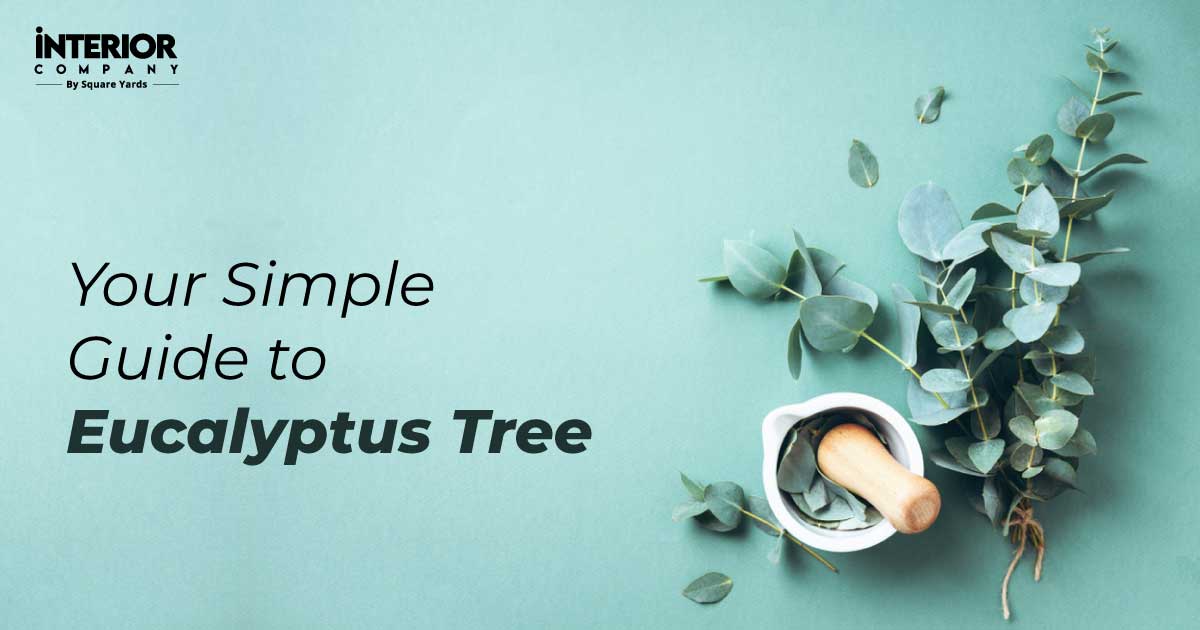Want to know how you can avail these benefits? We’ve got you covered! From planting to using its leaves, flowers, and bark. Eucalyptus is a game-changer for your well-being. Let’s dive into the simplicity of growing and enjoying the goodness of Eucalyptus in your own space.
Eucalyptus and Science
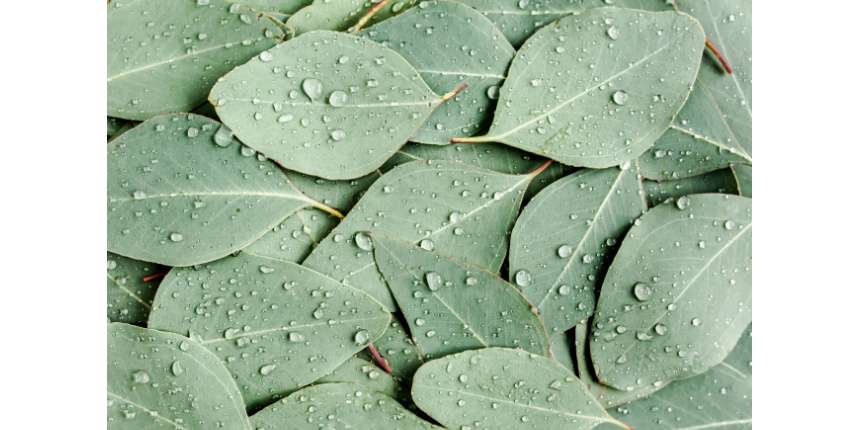
Eucalyptus, or Eucalyptus spp.(eucalyptus botanical name), is a beautiful native of Australia. The name derives from Greek words signifying’well” and’covered,” reflecting the leaves’ protective nature for their new growth. While the tree originated in Australia, Eucalyptus is now found in almost every part of the world.
Earlier, Indigenous Australians used it for medicinal purposes. In the 1800s, it gained prominence in Western medicine and industries. Its oil is used in medicine and as a flavouring agent in many high-end dishes. Today, the eucalyptus tree uses continue to be famous and loved. Several Eucalyptus species are found in India. Common varieties include –
- Eucalyptus globulus-Blue Gum
- Eucalyptus citriodora-Lemon Eucalyptus
Eucalyptus and Vastu
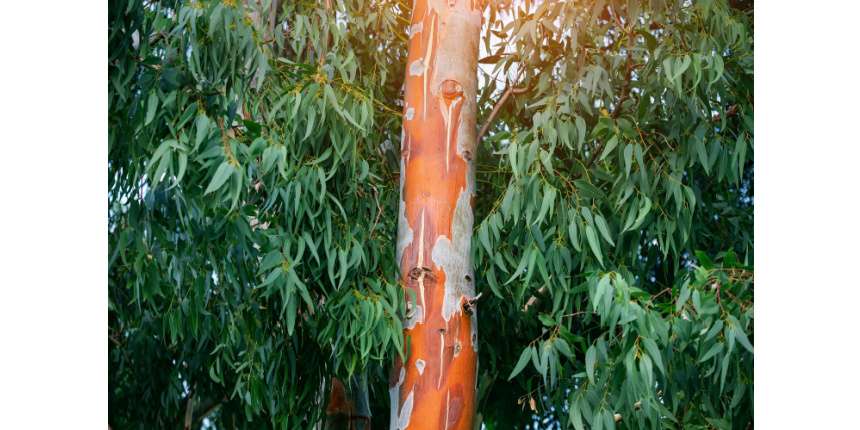
Putting Eucalyptus in the right place is good for your home. Eucalyptus is like a symbol of growth and positive energy. Its tall and strong presence is like a thumbs-up from nature, saying, ‘All good here!’
For positive energy, place it on the east or north side. Having Eucalyptus around isn’t just about having a cool tree. It’s about making your home a happy place.
Eucalyptus: Tree V/s Plant

The words ‘Eucalyptus plant’ and ‘Eucalyptus tree’ might sound similar but differ based on size and growth. An eucalyptus starts as a small plant, almost like a baby tree. It grows and gets a woody stem and branches, becoming a shrub or a small tree and then a full-grown tree. The size of the plant is based on its species. Usually, it takes a few years for an eucalyptus plant to become as big as a tree. Some kinds of Eucalyptus grow faster than others, and if they get lots of sunlight and good soil, they grow even quicker.
If your eucalyptus plant gets too big for your home, you can move it outside. Find a sunny spot with good soil that drains well. It’s best to move it when it’s growing the most.
If you want to keep your Eucalyptus like a shrub and not let it grow into a tree, you must trim it regularly. Trim the top part to control its height and encourage it to grow to the sides. Start trimming when it’s still young, and keep doing it as needed to keep it the size and shape you want.
Eucalyptus and Benefits

The plant has spiritual benefits, and eucalyptus medical use is quite popular. Here are some eucalyptus benefits from the tree planted at your home.
Antimicrobial Properties:
Eucalyptus fights germs. New research shows it can be a great antibiotic to help you resolve fungal or generic bacterial infections like infectious wounds, itchy skin, sore throats, and coughs.
Dental Care:
If you don’t like the store-bought mouthwash, go for the homemade eucalyptus one. It fights the germs that cause tooth problems.
Insect Repellent:
Eucalyptus keeps bugs away. It is an excellent bug repellent, used to kill bugs for a long time.
Pain Relief:
Eucalyptus might help with pain. People put it on their skin, and it helps.
Immune System Boost:
Eucalyptus can make your immune system stronger. This means your body can fight sickness better.
Additional Conditions:
Benefits of eucalyptus leaves also include the treatment of joint pain and diabetes.
Eucalyptus and Potting

You can either go for a sapling/small plant or grow it from scratch. To plant an Eucalyptus tree, all you have to do is pick a sunny spot with good, well-drained soil, like sandy or loamy. Add mulch around the base for moisture and weed control, and then a thin layer of soil. Put the root ball in it and fill the rest with soil. Water the pot once you are done with the soil part.
To grow the eucalyptus from seeds, collect the seedlings from a healthy tree. Plant with damp compost and sand in a tray. Once seedlings have a few gum tree leaves, move them to a pot. Since the plant is tiny, expose it gradually to the outdoors. Consider local weather conditions, especially frost. The best time to grow gum tree plants is in the summer.
Eucalyptus Plant Care
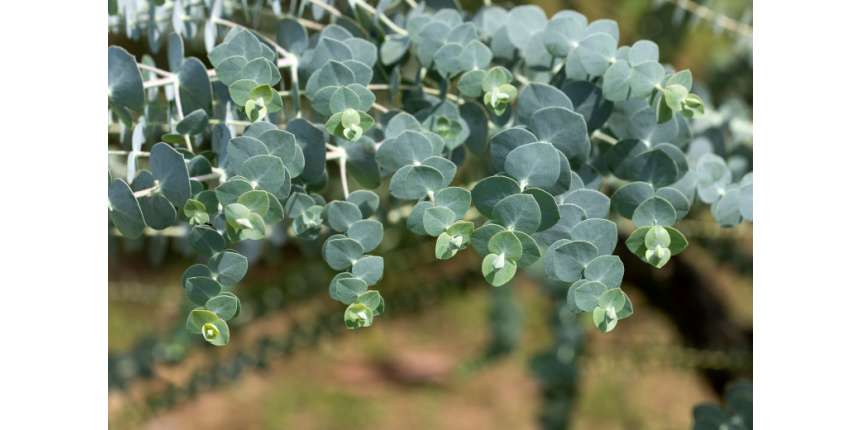
Taking care of Eucalyptus is very easy-peasy. Give it a sunny spot with room to grow. Not only on the top, but the pot should also have enough room for the roots to grow. Water it when the topsoil dries out, and feed it balanced fertiliser during the growing season. Prune the plant’s dried leaves or unleavened branches to shape. Ensure to do the trimming sparingly, as it can weaken your plant. Eucalyptus can handle a bit of cold, so no worries if winter gets frosty. Lastly, keep an eye out for pests. Here is a list of pest and their treatments that you can use to keep your nilgiri tree healthy and happy –
- Anthracnose: A fungus that can make tree parts twisted and discoloured. Young trees are more likely to get it when there’s too much moisture. Trim-affected areas in fall and winter.
- Phytophthora: Another fungus that can hurt the tree’s roots and trunk. Look for wilted, yellow leaves and sap that stain the trunk. Use fungicides early and better care practises.
- Heart Rot: Some fungi cause the inside branches and trunks to rot. Just looking for any form of rotting in the trunk of the Safeda tree. It affects old, weak trees. Cut off the bad parts to stop it.
- Powdery Mildew: A common fungus seen as white powder on leaves and stems. Sprays and sulphur can help if used early. Trim the tree right, and don’t use too much nitrogen fertiliser.
Eucalyptus Plant Uses
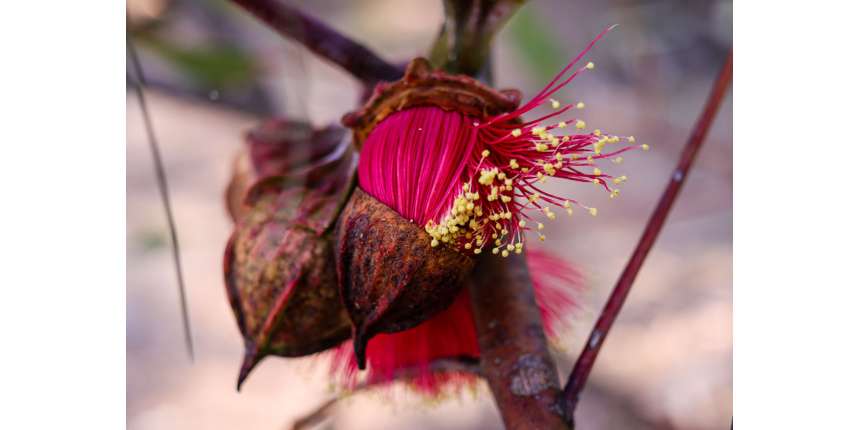
If you are new to the plant world, then this section is just perfect for you! Here, you will learn eucalyptus plant uses and consumption tricks. Make sure the eucalyptus parts you use are clean and contain no chemicals. Use it sparingly, especially if you’re new to it. If you need more clarification, check with a doctor before trying it.
Eucalyptus Leaves:
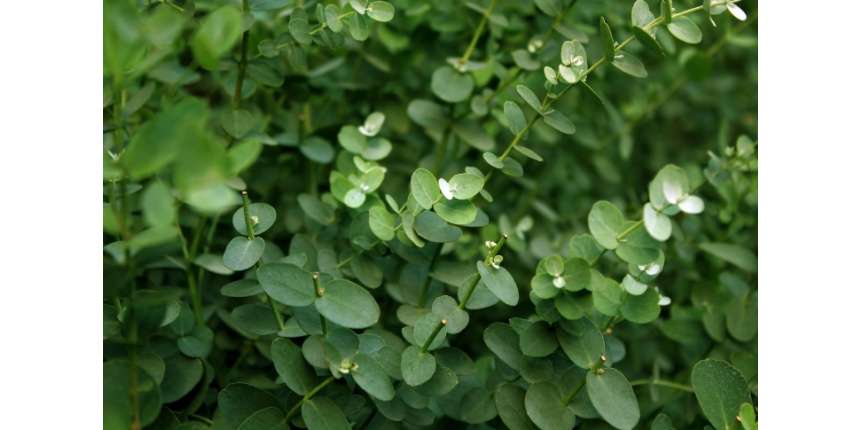
You can make tea with eucalyptus leaves. Just put the leaves in hot water and let them soak. This tea might help you breathe better. Another way is to boil the leaves or put them in the steamer and breathe in the steam, which can clear your nose. Use one of the green or healthy ones you have dried before. Eucalyptus brown leaves or infected ones, can cause serious health issues.
Eucalyptus Flowers:
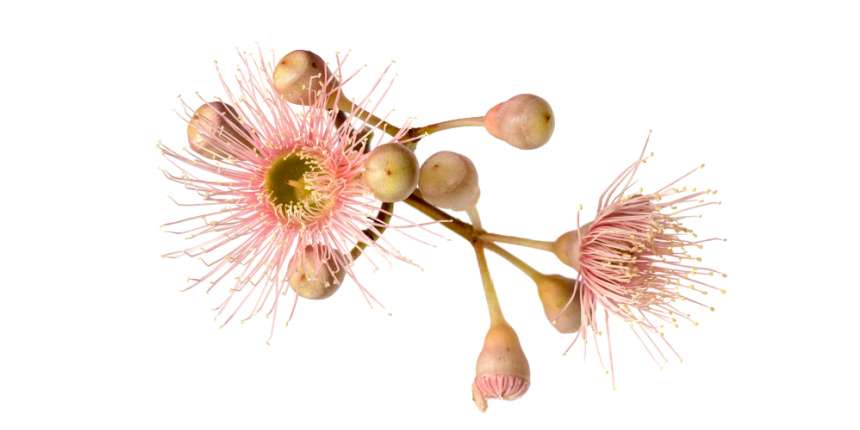
Eucalyptus tree flowers are not just pretty; you can eat them too. Try adding them to salads for a different taste. You can also put the flowers in water for a tasty drink.
Eucalyptus Bark:
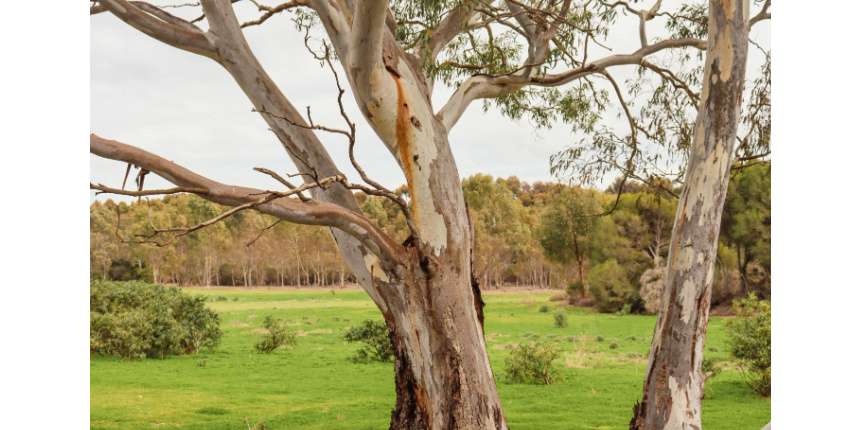
The bark of the eucalyptus tree can be used for making oil. Soak the bark in oil, and you get a nice massage oil. You can also make a strong liquid called a tincture. Mix the bark with alcohol and add a few drops to water for a possible health boost.
Eucalyptus Fruit:
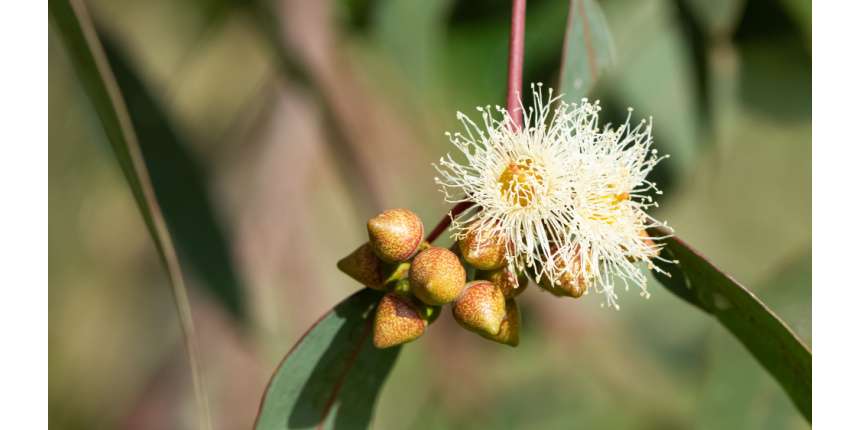
Eucalyptus is not traditionally known for its fruit. Most of the fruit produced by different types of eucalyptus trees is poisonous and non-edible. Try to harvest the plant at the flowering stage to avoid getting any fruits.
Eucalyptus: Precautions and Side Effects
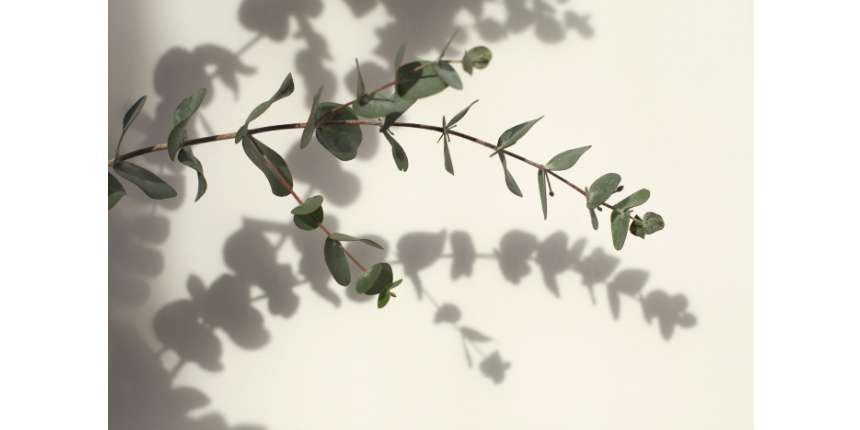
But be careful; eucalyptus tree leaves can be strong. Do not consume it directly. Be careful with the plant if you have kids or a pregnant woman in the house. It’s just a medicinal plant, not a magic wand, so it can make people with asthma worse. Always check if you’re allergic. It can also upset your stomach if not used correctly.
Conclusion
In a nutshell, Eucalyptus is a super cool tree from Australia. It’s not just a tree; it’s a wonder plant! Do you want to grow it at home? Easy peasy! And there are fun ways to use it, too. For positive energy and a long, healthy life, explore the world of eucalyptus!
